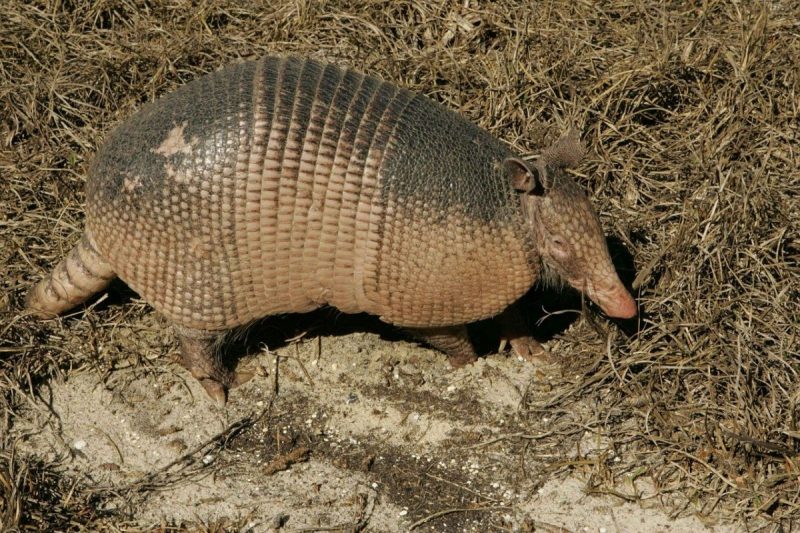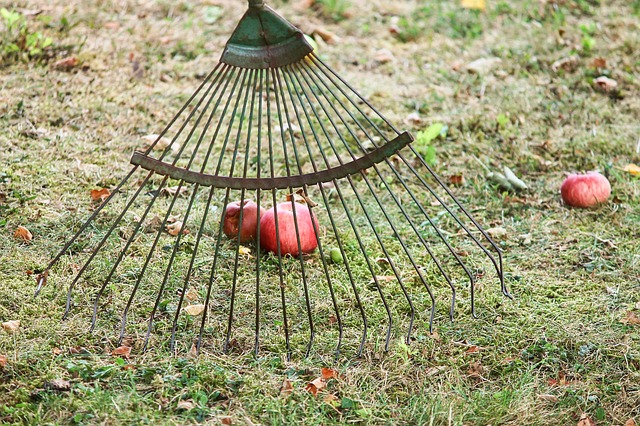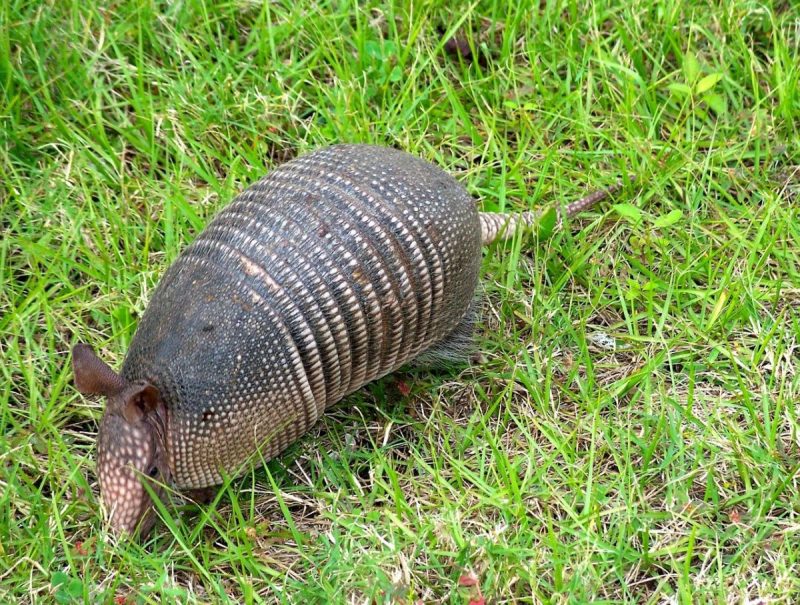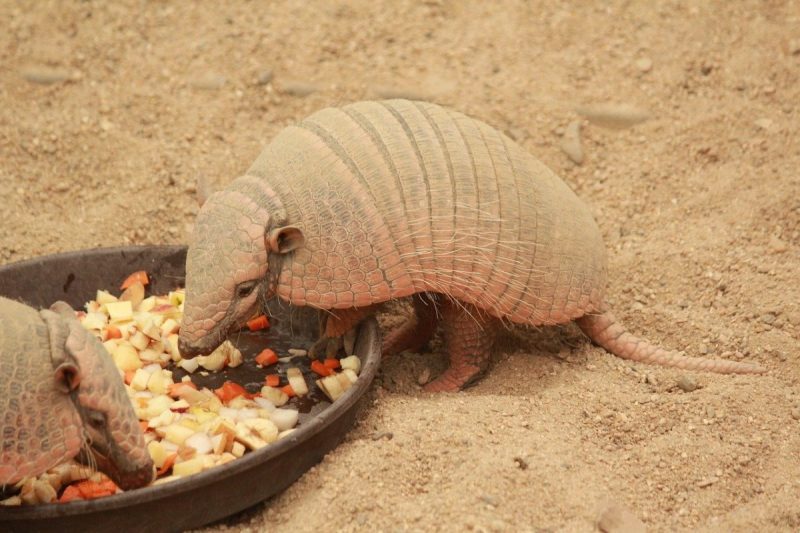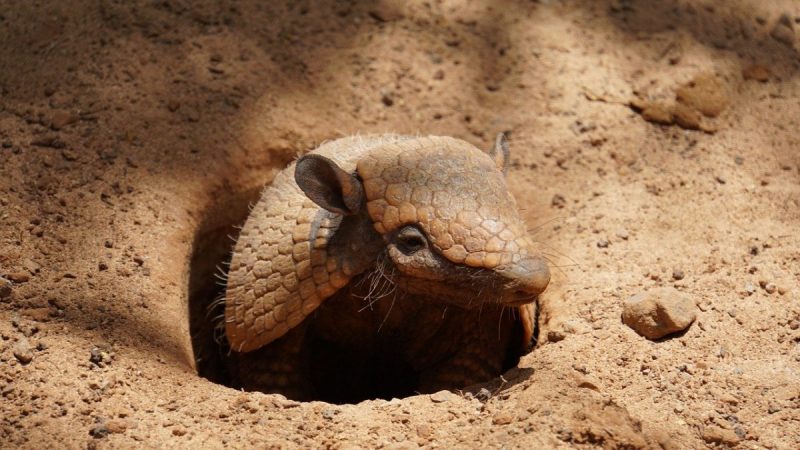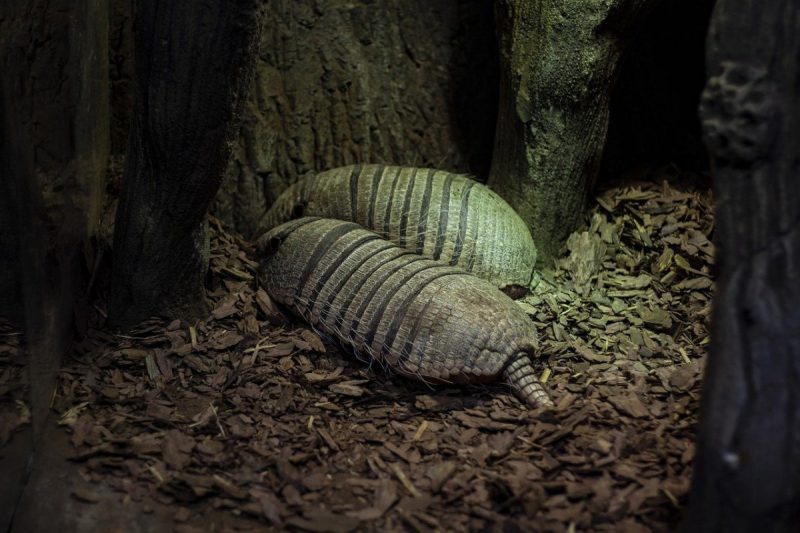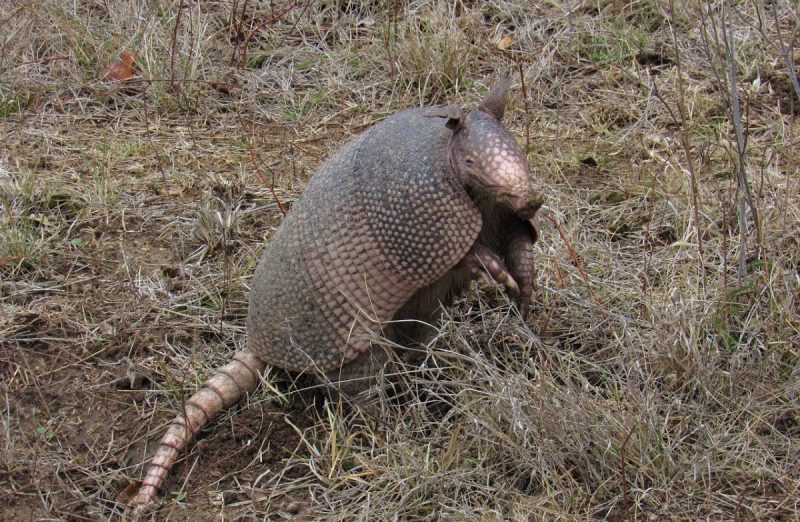How to get rid of Armadillos
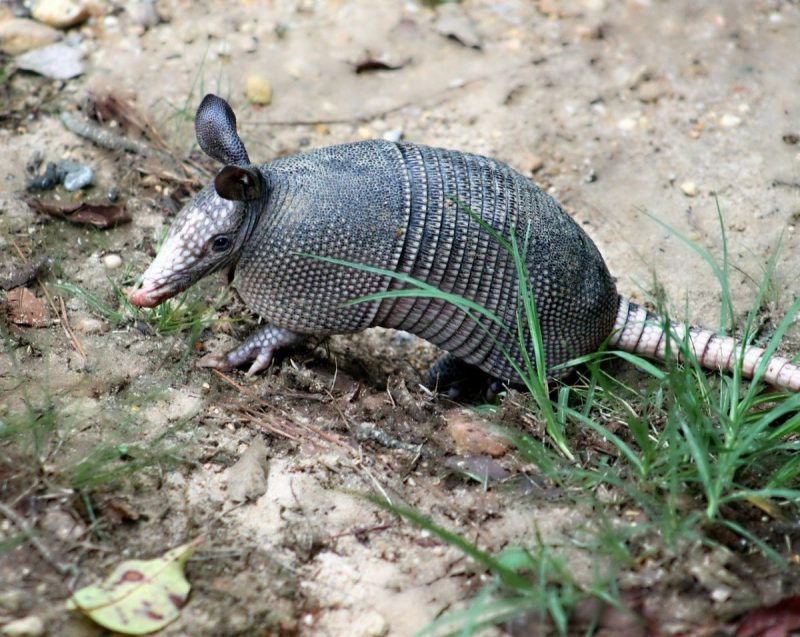
Armadillo is a placental mammal, belonging to the order Cingulata, recognized by the leathery shield that covers its back and its long claws, specially adapted for digging. It can only be found on the territory of the Americas. Almost 21 existing species of armadillo are known, adapted to various habitats. They are not dangerous animals for humans, and when they feel threatened, they curl up in a spherical shape.
Signs of the presence of an armadillo
In order to be able to choose the optimal removal method, it is recommended to identify the areas that the armadillo frequents and the type of damage it produces. Among the damages it can bring to a certain property, we mention:
- Digging holes in the lawn/turf;
- Excavating tunnels under various structures, under the pavement, under piles of plant debris, etc.
- Creating cracks/crevices in the sidewalks, alleys or in the foundations of the buildings, as a result of digging.
- Removing the plants/seedlings from the ground;
- Damage to the underground pipes and wires.
The armadillo enters a certain property in search of food and shelter, but since most of the food they prefer is found underground, its complete removal is almost impossible. However, there are a number of measures that can be taken, so that the respective space does not attract them in a special way.
Among the measures that can be applied, we mention:
- Removing places that can offer them shelter, such as piles of wood, certain bushes and shrubs. The armadillo prefers to make its burrow in covered areas, and thus, by removing them, the armadillo will be less prone to enter the respective perimeter.
- Removing fallen fruit that might attract them.
Thus, after observing the habits of the armadillo, it is recommended to choose the proper method, depending on the situation. In order for their removal to have a high degree of efficiency, it is best to use multiple methods (repellents, traps).
Use of traps
It is recommended to use traps when you want to remove an armadillo that has found shelter on a certain property. Using traps is an easy method if they are placed in the right place. The armadillo uses the same routes when digging, so their behaviour is very predictable.
General advice on how to place a trap:
- It is recommended to place the trap at night, in front of the burrow’s entrance;
- Place the trap along walls or fences, as close as possible to where they caused the damage;
- It is recommended to create a “V” using wooden planks to guide the armadillo towards the entrance of the trap.
The armadillo is an animal that has certain fixed habits, with a poorly developed vision and which depends on certain specific travel routes, which guide it to and from the burrow. Thus, it is important to try to identify the burrow and the nearby travel routes.
Among the places where traps can be placed, we mention:
- Above the burrow’s entrance;
- Along a wall or a fence, at a short distance from the burrow’s entrance;
- On an intensively travelled route, marked by its traces.
Additionally:
If the armadillo’s burrow cannot be identified, it is recommended to place the trap along a wall or fence, near the area where they have caused damage.
Recommended products
-
You can find products on a different store
Change Store -
You can find products on a different store
Change Store -
You can find products on a different store
Change Store -
You can find products on a different store
Change Store -
You can find products on a different store
Change Store -
You can find products on a different store
Change Store -
You can find products on a different store
Change Store -
You can find products on a different store
Change Store -
You can find products on a different store
Change Store -
You can find products on a different store
Change Store -
You can find products on a different store
Change Store -
You can find products on a different store
Change Store -
You can find products on a different store
Change Store -
You can find products on a different store
Change Store -
You can find products on a different store
Change Store -
You can find products on a different store
Change Store -
You can find products on a different store
Change Store -
You can find products on a different store
Change Store -
You can find products on a different store
Change Store -
You can find products on a different store
Change Store -
You can find products on a different store
Change Store -
You can find products on a different store
Change Store -
You can find products on a different store
Change Store -
You can find products on a different store
Change Store
At the same time, baits can be placed inside the trap. Since the armadillo rarely feeds at the surface. It is not often recommended to use baits, in order not to attract other animals (for example, raccoons) into the trap. However, good results have been obtained with baits that target the specific preferences of the armadillo, such as worms, larvae or rotten food. It is also important to mention that every armadillo is different, therefore, using a bait together with a trap will help you determine if they are effective for the armadillo population in the area. In addition to choosing a suitable bait, an important aspect is its positioning inside the trap, for an efficient capture.
General recommendations regarding bait placement:
- The distance between the bait and each door (when open) must be sufficient to attract the armadillo completely into the trap;
- To reach the bait, it is necessary for the armadillo to trigger the mechanism (to step on the metal plate);
- It has to be placed according to the type of trap (with 1 entrance or 2 entrances);
In the case of a trap with a single entrance, the bait will be placed towards its end, right behind the trigger, as far as possible from its walls, to prevent the armadillo from reaching it from the outside.
In the case of traps with two entrances, the bait is recommended to be placed behind the trigger or it can be placed in the ground, right under the trigger/trap, or it can be attached to the upper part of the trap.
Additionally:
- The armadillo can overturn the trap trying to reach the bait, therefore, placing a weight or a brick on top of it is recommended;
- It is recommended to place the traps on a straight, flat surface;
- If you notice that other animals have been captured, it is advisable to stop using the bait and make sure that its positioning is adequate, in the areas that the armadillo frequents;
- It is recommended to wear gloves to avoid imprinting your scent on the bait/trap, as any trace of human scent can discourage the armadillo from entering the trap.
Placing the trap
It is recommended to place the trap just before they come out to feed. In general, the armadillo is a nocturnal animal, but in winter, in areas with a colder climate, they often come out during the day. Always follow the instructions specific to the chosen trap.
Trap monitoring
A well-known aspect about armadillos is that they tend to escape from the trap after a certain time, digging on the lower part or running towards the walls of the trap. That is why, after positioning the trap, it is important to monitor it constantly, in order not to leave the armadillo captured for a long period of time.
A captured armadillo
After the armadillo has been captured, it is recommended to use protective gloves when handling the trap, being recommended that it be kept at a greater distance from the body, to avoid direct contact with the animal. Moving it to another area will be done in compliance with the legal provisions in force.
As a rule, it is recommended to choose a humid, woody environment, near a pond or a river. When you release the armadillo, it is recommended to move away from the trap door, thus allowing it to come out slowly. In addition, it is advisable to check if the old burrow of the armadillo is empty, after which it can be filled with gravel to prevent other animals from using it as a shelter.
The use of repellents
To keep the armadillo away from the property, it is recommended to use products with a repellent action. Thus, after identifying the areas where it has caused damage and determining its habits in the yard, it is recommended to use a repellent suitable for your requirements. In general, there are 3 ways to remove them:
- Removing the underground food sources;
- Creating an unpleasant smell in their burrows;
- Scaring them using different tactics.
In addition to the periodic application of repellents, certain measures are also very important, so that the respective space does not attract them again – removing any available piles of vegetable/wooden debris, bushes, fallen fruits, etc.
Depending on the product, the repellents can be liquid, in the form of granules or powder. They will be applied/used in accordance with the manufacturer’s recommendations.
Recommended products
-
You can find products on a different store
Change Store -
You can find products on a different store
Change Store -
You can find products on a different store
Change Store -
You can find products on a different store
Change Store -
You can find products on a different store
Change Store -
You can find products on a different store
Change Store -
You can find products on a different store
Change Store -
You can find products on a different store
Change Store -
You can find products on a different store
Change Store -
You can find products on a different store
Change Store -
You can find products on a different store
Change Store -
You can find products on a different store
Change Store -
You can find products on a different store
Change Store -
You can find products on a different store
Change Store -
You can find products on a different store
Change Store -
You can find products on a different store
Change Store -
You can find products on a different store
Change Store -
You can find products on a different store
Change Store -
You can find products on a different store
Change Store -
You can find products on a different store
Change Store -
You can find products on a different store
Change Store -
You can find products on a different store
Change Store -
You can find products on a different store
Change Store -
You can find products on a different store
Change Store
In conclusion, depending on the situation, when opting for the removal of an armadillo, it is advisable to choose the optimal methods, in accordance with the legal provisions, without harming it. At the same time, it is advisable to take certain measures (gathering plant debris, mounting protective fences) so that the respective space does not attract them in a special way and does not facilitate their return.














































































































































































































































































































































































































































